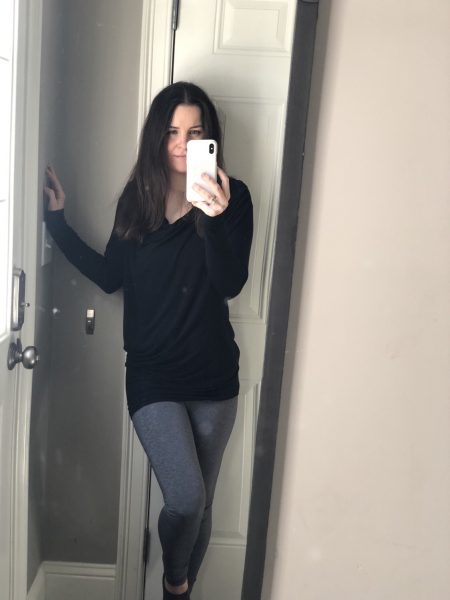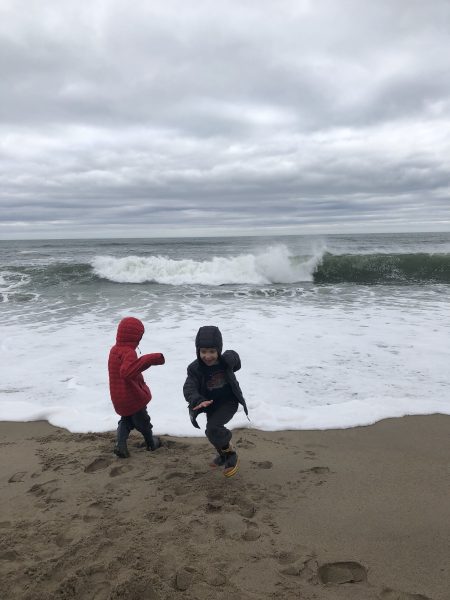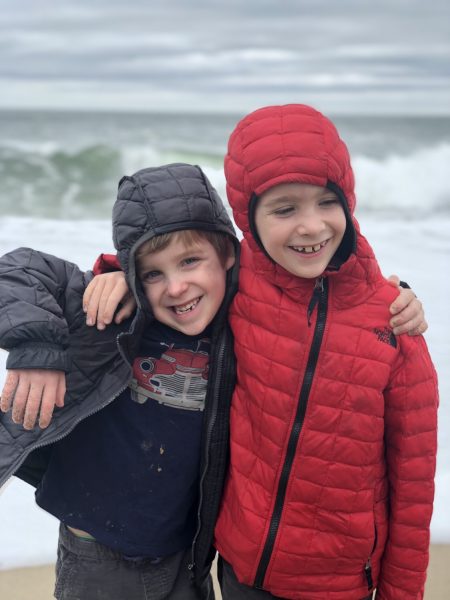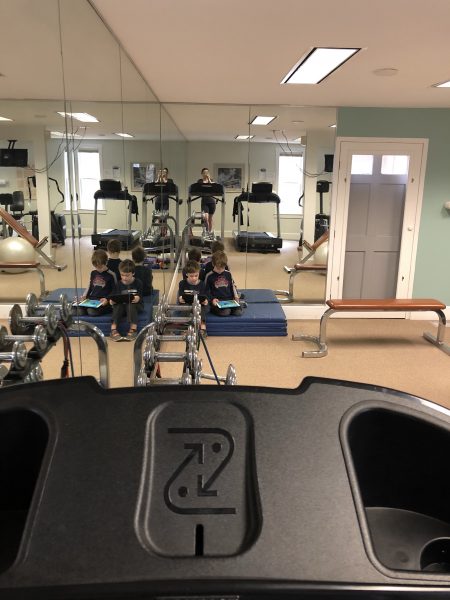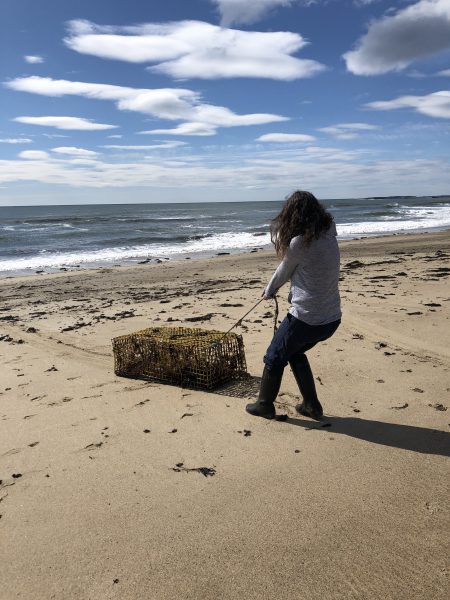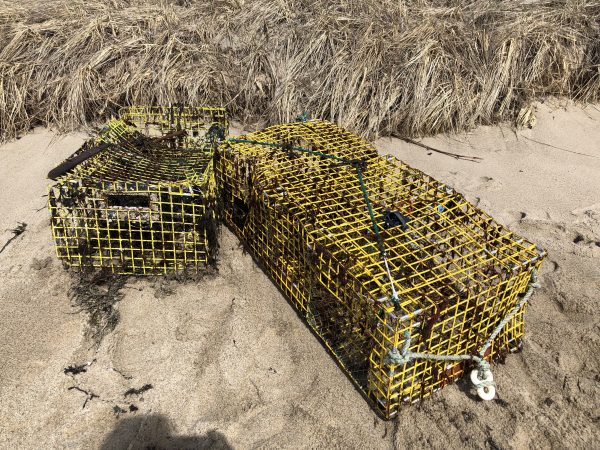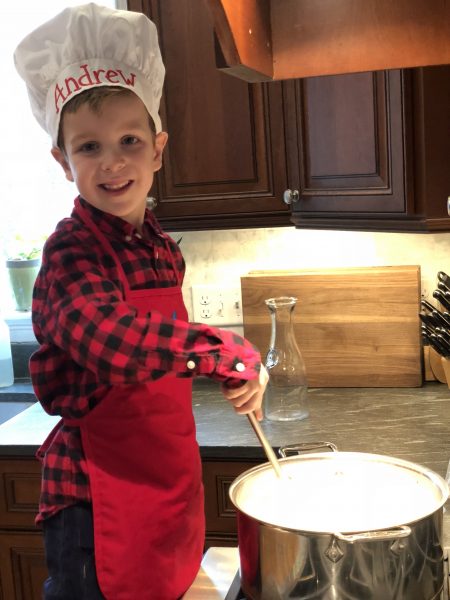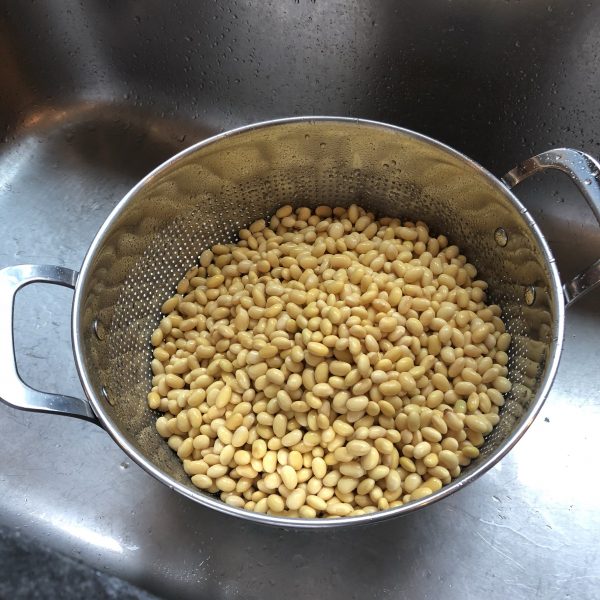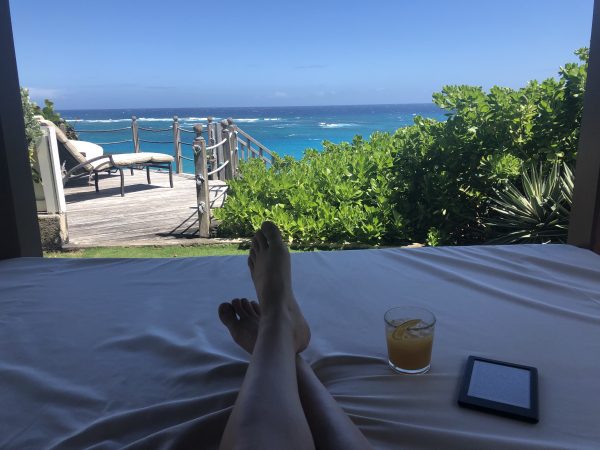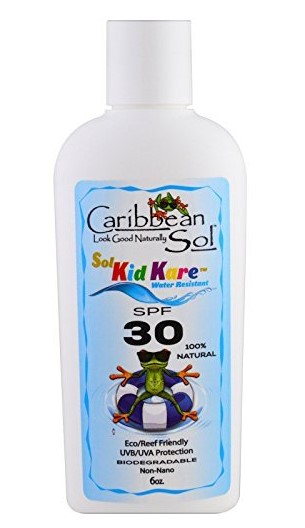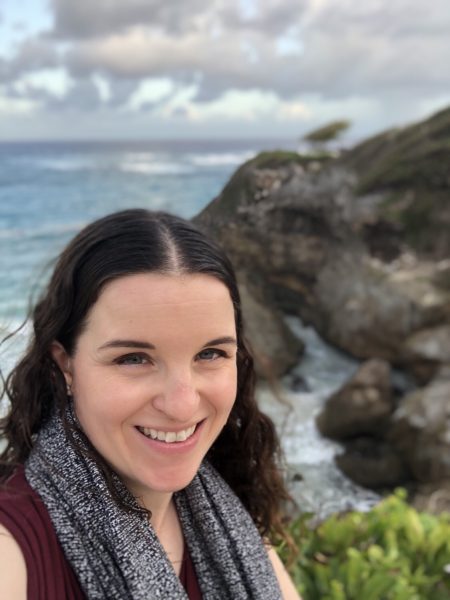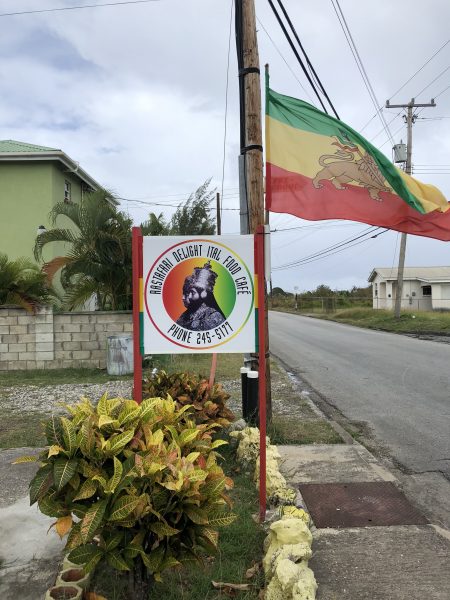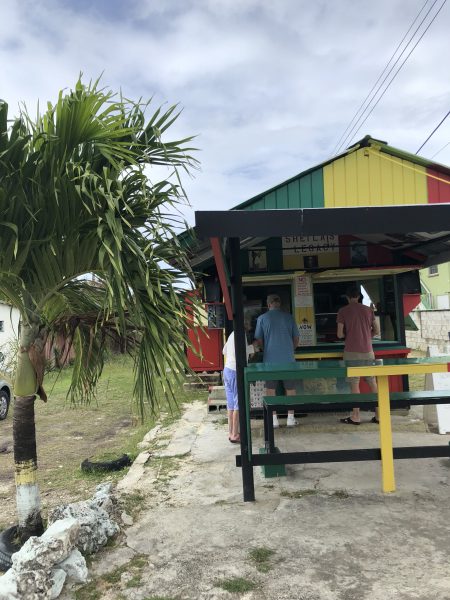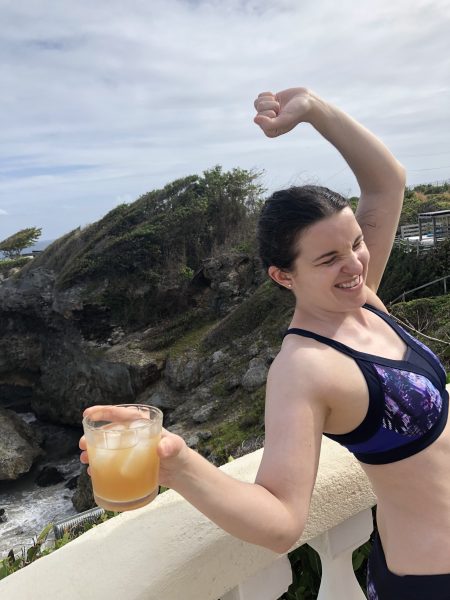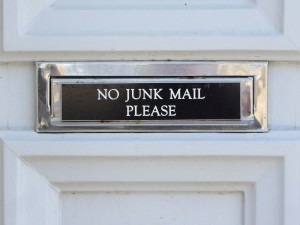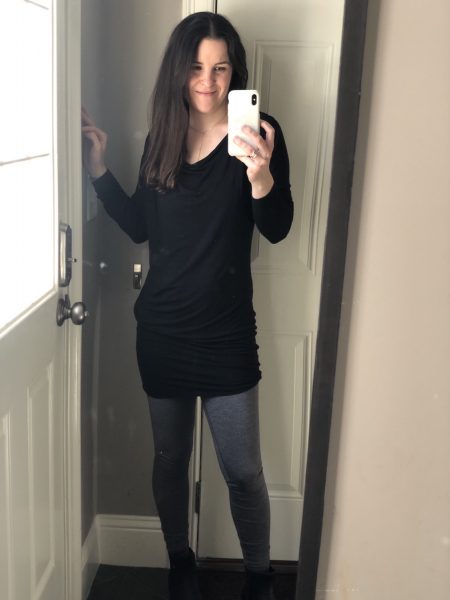
I try to make environmental clothing choices by only buying clothes I love, owning less, buying things that coordinate with what I own, seeking sustainable brands, investing in quality, and caring for my clothes so they last longer.
I decided a decade ago that I would choose black over brown, simplifying my shoe and accessory options and increasing the compatibility of everything in my closet.
I own one handbag that I bought in 2015 from Matt & Natt that coordinates with my one wallet and one tote bag.
I own one belt.
I have favorite outfits and shoes and kind of a “signature style” rather than being trendy. I know what I love wearing, so that’s what I buy. I wear a lot of black with pops of color from accessories like my teal blue scarf that I bought on my honeymoon, or my bright red Rothys, which are machine washable vegan ballet flats made from recycled water bottles. I’ve had them for over two years, washed them dozens of times, and wear them basically every day in the spring and fall. They were expensive, but I’ve never had such comfortable flats. I can walk for miles in them and after two years they still look brand new.
Another investment I made and love is my black Revolve Dress from encircled.co. I’m not affiliated and this isn’t a sponsored post. Like the Rothys, it was expensive. But I’ve had it for over two years, wear it regularly, and it still looks fantastic. It’s made from modal, a plant-based fabric from beech-tree pulp that encircled advertises as made in a manner that allows 95% of the water and materials used to be recycled. It’s OEKO-TEX Standard 100 certified which is a certification designed to show that items are free from harmful chemicals.
Modal is a strong, durable fabric. This dress hasn’t pilled and hasn’t faded. It’s designed to be worn at three different lengths, dress, tunic or top, and with two different fronts, cowl or boat-neck with the cowl in back. You can wear it off the shoulder, or cover your shoulders (miraculously, it never slips because of the shoulder design). It’s drapey and flattering, forgiving in the midriff, and fun to style at different lengths. Having this dress gives me more style options out of a single piece, so I can wear it as a top or a tunic with yoga pants most of the time, and with knee-high boots or ballet flats as a dress when I want to go out to dinner.
I’ve washed it carefully on delicate cycle with cold water and hung it to dry, and caring for it well means that two years after I purchased it, this wardrobe staple still looks great.
I’d like to get better at buying second-hand, but in the meantime I loved looking up my purchase history and realizing that this dress has been a favorite item for over two years and still looks great. Having things in your closet that are comfortable, flattering and durable, and a closet where things coordinate, is awesome. Speaking of – I loved the podcast episode of By the Book about “The Curated Closet”. Having clothes you love means fewer shopping trips and a happier time getting ready to go anywhere! The book has some brilliant suggestions for how to think before you buy and shop purposefully so you’re not buying things you won’t wear or love.
AND NOW THIS….
7 awkward selfies of me in the Revolve Dress.
Send me your closet strategies, green clothing tips, and awkward selfies!
Dress length:
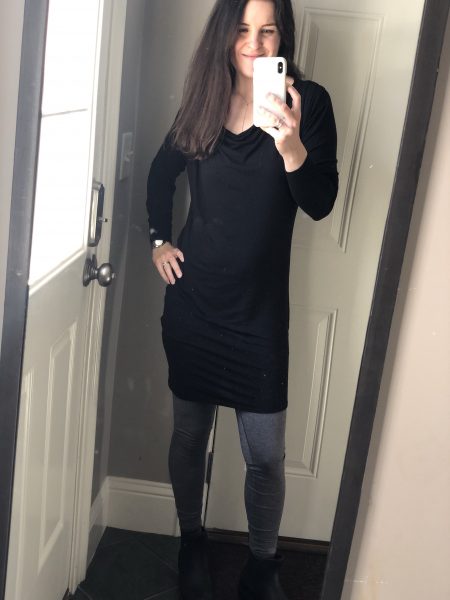
Sweatshirt length (usually worn with jeans)
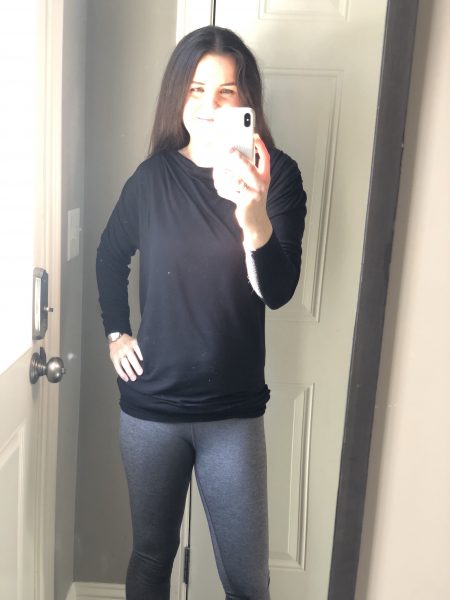
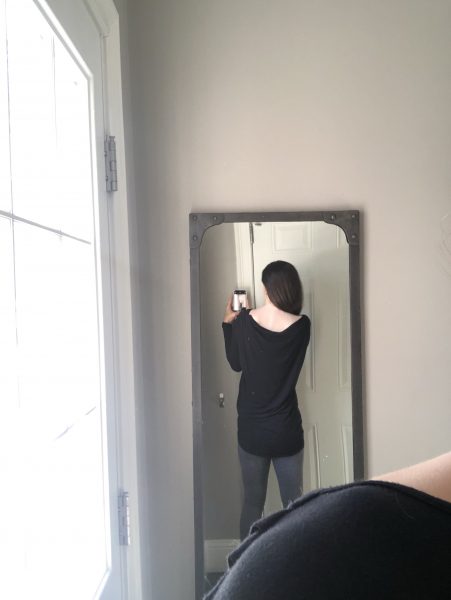
Sweatshirt length with cowl in the back, front view:
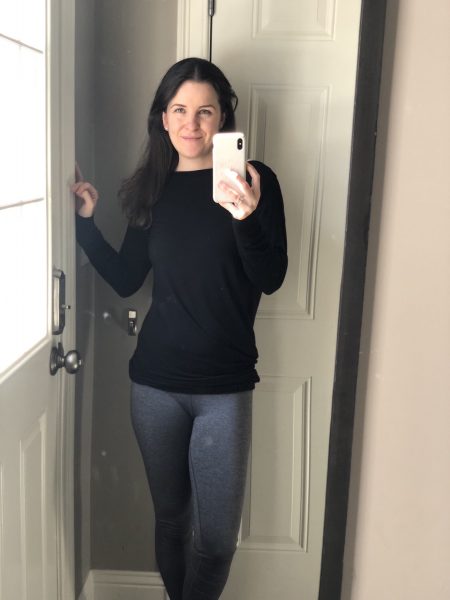
Off the shoulder look:
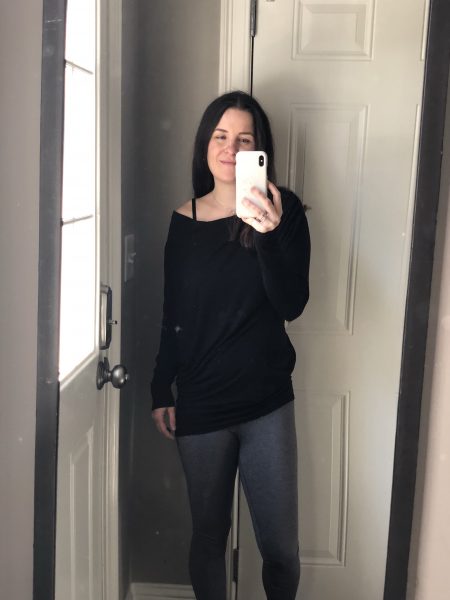
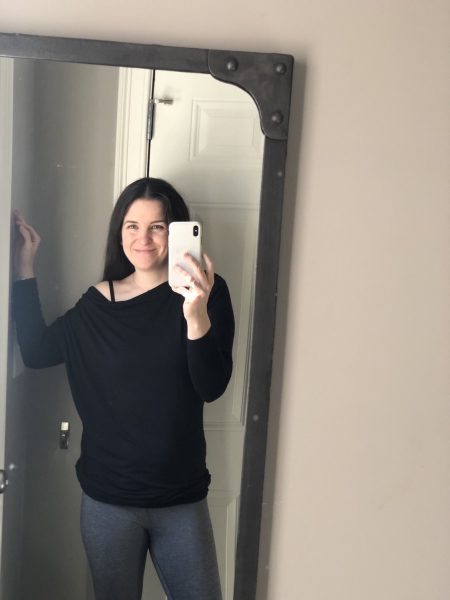
Asymmetrical tunic length – the fabric stays where you put it because of the slight stretch!
